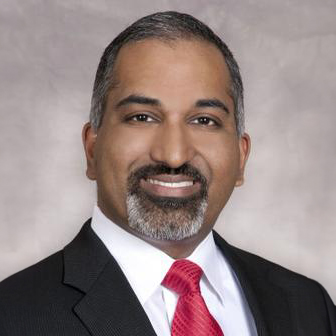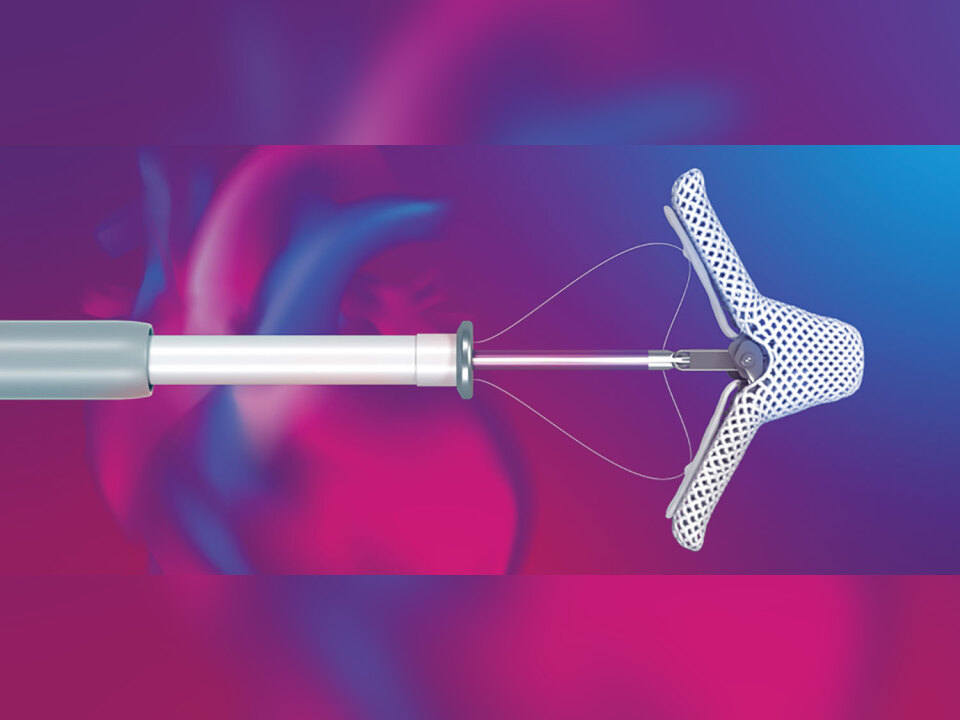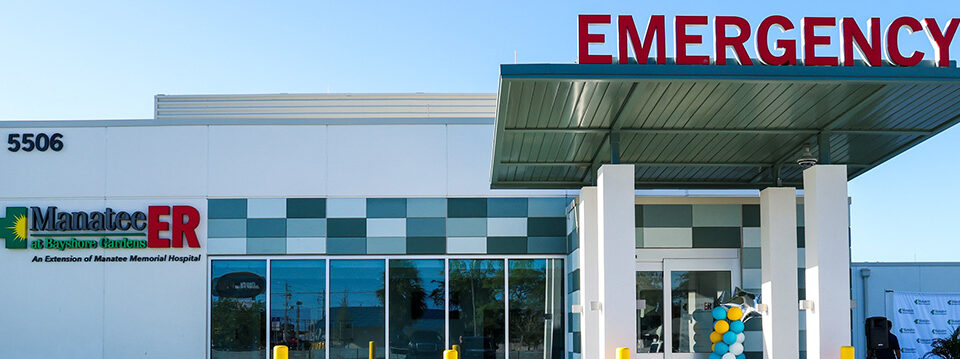Newcomers to the Sunshine State are often lured by the weather or the water. For Jerry Blankenship, it was the Gulf of Mexico that drew him because while living in Arizona for many years, he got plenty of sun and sand, but not enough surf.
“I really wanted to be by the water,” Jerry confirms. “A friend of mine and I came out here about 10 or 11 years ago for the first time and spent some time on Anna Maria Island. As soon as I got here, I said, This is the good life.”
Jerry, 70, made his move shortly after that vacation. He’s been living what he refers to as “the good life” ever since, working part time at a restaurant near his home in Cortez and relaxing near the beach whenever possible.
The only interruption to that idyllic life came about a year ago when treatment for a bad case of appendicitis revealed a far more serious and potentially fatal health issue, an aortic aneurysm.
A juxtarenal thoracic abdominal aortic aneurysm (JAA) is a bulge in the lower part of the aorta (the large artery that runs through the torso), where the arteries that lead to the kidneys branch out.
In Jerry’s case, the bulge was nearly three inches in diameter, which is about two inches larger than the aorta should normally be, and nearly six inches long, beginning near the renal arteries and running downward.
A JAA typically forms as a result of a growing weakness in the artery walls that can be caused by a number of issues, including high blood pressure, high cholesterol or a buildup of plaque inside the arteries.
“Patients recover much faster from this procedure than they do from an open abdominal approach.” – Dr. Mathews.
If an aneurysm of this nature is left untreated, the weakened artery walls can eventually separate, tear or even burst, which can lead to a life-threatening case of internal bleeding.
“I had no idea I had anything like this going on,” Jerry offers. “I had no symptoms of any kind, so I was actually lucky that I had the problem with my appendix because that’s how doctors found the aneurysm, from a CT scan of my appendix.”
Minimally Invasive
In some cases, small slow-growing aortic aneurysms can be treated with medication and lifestyle changes. Larger, faster-growing aneurysms are often considered emergency situations that need to be treated immediately through surgery.
Jerry’s aneurysm fell somewhere in between. Due to its size and location, surgery was required. Jerry’s doctors determined he could wait a few weeks and undergo a minimally invasive form of the surgery called an advanced aortic aneurysm repair. During this procedure, a customized stent is placed inside the aorta where it is bulging to give the patient what is essentially a newer, stronger aortic wall.
In patients who are candidates for the procedure, this endovascular approach replaces the more extensive open abdominal surgery. During the open abdominal surgery, the aorta is clamped to stop blood flow and a synthetic aortic graft replaces the damaged arterial segment.
Manatee Memorial Hospital, located in Bradenton, recently became the first in the area to offer the advanced surgery.
In addition to major advancements in the development of aortic grafts, Manatee Memorial Hospital’s ongoing commitment to leading-edge treatments made this less invasive option a possibility for Jerry.


Manatee Memorial’s Heart and Vascular Team: Front row (from left), hospital CEO Tom McDougal, DSc, FACHE; vascular surgeon Dr. Howard F. Hermans; interventional cardiologist Dr. S. Jay Mathews. Back row (from left), Amy Kimbell, RN; Erica Smith, RN; hospital COO Joseph Hwang; cath lab coordinator Kimberly Chase
The surgery was coordinated and performed by its Heart and Vascular Team, an industry leader that has done more advanced cardiac procedures than any other in the state.
“In the past, patients such as Jerry had to go to Tampa or even Tallahassee to have this procedure done,” says S. Jay Mathews, MD, MS, FACC, FSCAI, who assisted Howard F. Hermans, MD, FACS, during Jerry’s surgery.
“Manatee Memorial Hospital is doing a lot of leading-edge stuff in the endovascular space. The administration has been very forward-thinking about bringing in new technologies and programs, promoting them and allowing physicians access to them.
“As a result, Manatee Memorial Hospital is now doing one of the highest volumes of endovascular procedures in the country. They’re doing stuff that no one else in the area is doing, and that is a big-plus for patients like Jerry.”
The decision to offer Jerry this advanced option was made following his appendectomy. Once Jerry had recovered from that procedure, doctors began preparing him for the advanced endovascular aortic aneurysm repair.
During the earliest stages of preparation, a 3D map of the patient’s anatomy is produced from a CT scan that is used to determine the exact size of the custom-made stent.
“The stent we use is called the Zenith Fenestrated (ZFEN)® aortic stent,” Dr. Hermans states. “Its design includes little openings that line up perfectly with the renal arteries that lead to the kidneys and the mesenteric artery that leads to the intestine. That alignment allows us to place the stent precisely where it needs to be.”
The stents are placed through catheters fed through the femoral arteries, which are accessed through tiny incisions in the groin. X-ray guidance provides the physician with a clear picture of the surgical area.
“Through those little openings, we place stents directly into the arteries to continue perfusing those arteries,” Dr. Hermans continues. “We first deploy the main body of the stent, the one with the openings in it. Once that is properly located, we pass wires through the openings into the renal and superior mesenteric artery, then the stents are deployed for those arteries.”
Rapid Recovery
The surgery is “quite complicated,” and it requires the work of at least two physicians with “very good endovascular skills who work well together,” according to Dr. Mathews, who notes that patients benefit in several ways from this procedure.


“First of all, it’s safer than open surgery,” the doctor reports. “Because we don’t need to put a clamp high up across the aorta where you can run the risk of cutting off the blood supply to the spinal cord, which can lead to paralysis or organ dysfunction.
“Patients recover much faster from this procedure than they do from an open abdominal approach. Following this procedure, most patients go home from the hospital the next day and are saved from a really long operative recovery period.”
Jerry went home the day after the surgery, and despite experiencing a bit of fatigue and back soreness, he resumed his regular daily activities a few days later.
“Now, I feel great,” Jerry exudes. “I told Dr. Hermans recently that I feel so good sometimes that I forget I just turned 70 years old. He and Dr. Mathews did a great job. I’m very fortunate to have had two doctors like that helping me.
“I was pretty shocked and quite scared when I first learned I had this problem, but Dr. Hermans did a great job of explaining the procedure. He even drew it all up on a board to show me where the stents would go and everything.
“He helped put me at ease because he was so confident about what he was going to do. After talking to him, I said, All right, let’s do this. And everyone at the hospital could not have been nicer. They were awesome. Just awesome.”
Individual results may vary. There are risks associated with any surgical procedure. Talk with your doctor about these risks to find out if minimally invasive surgery is right for you.
ZFEN Aortic Stent graphic courtesy of Health and Human Services. Heart and Vascular Team photo courtesy of Manatee Memorial.









